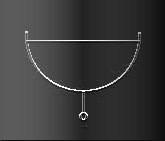DOS PROGRAMS:
:_________
:_________
MUSIC:
:_________
:_________

The first steps of electronic music were done together with tape recording, especially after the II World War: the French composer Pierre Schaeffer invented the term Musique Concrète to describe a new kind of music based on the manipulation of recorded sounds on magnetic tapes. So in the 1950s a number of techniques were used to create such music: cutting the tape in small parts and putting them in different positions; changing the speed of recorder to get transpositions of sounds; creating loops; getting reversed sounds running the tape in the opposite direction etc. Composers like Karlheinz Stockhausen and György Ligeti used these techniques extensively in some pieces, but most of their pieces are not based on recorded sounds: sounds are produced by machines as oscillators. Others like John Cage were using recording sounds. The two main areas of compositional methods were to work with recorded sounds or with synthetic sounds, depending on aesthetic of composers.
For all composers of electronic music it was difficult to find the machines they needed, and in general only radio or television stations had such kind of equipment; most of electronic music produced in the 1950s was realized in these studios. Meanwhile experiments were conceived using more than one or two loudspeakers, to get for example the impression of sound movement in space. Stockhausen often used these techniques and a typical example is the movement of sounds on multiple channels in Kontakte.
The introduction on the market of some analog synthesizers at the end of the 1960s, like those invented by Robert Moog, allowed composers to experiment new and fascinating perspectives in researching new sounds. Even if it was possible to compose a totally new music with analog machines, still composers did not have a perfect control of sound events and many things were difficult to achieve or not realizable.
The great revolution already started at the end of the 1950s, when the development of computers involved a radical changing on electronic music composition. With digital technique suddenly many ideas became possible, and also with the best control on sound. In the middle of the 1960s some composers like Gottfried Michael Koenig were already using computers to generate set of numbers according to given rules, which later could be translated in musical notes, but still at that time it was hardly possible to imagine what a computer can actually do with sounds. In 1969 Max V. Mathews, from Bell Laboratories in United States, developed a computer program for digital sound synthesis called Music 3, which later became Music 4 and was introduced in some american universities. The following version, Music 5, became a popular compositional tool among electronic music composers. The purpose of these programs was to control the sound generated directly by computer, simulating the expensive oscillators and filters which where used in recording studios. Much more: the philosophy behind Music 5 allows a perfect control on every detail of sound and, because of these features, this program was continuously developed till today in new versions, and the latest version (developed at Massachusetts Institute of Technology in Boston) is called Csound. A number of composers involved in electronic music could wrote pieces on computer using such kind of programs, without using expensive machines and even without any fully equipped recording studio. The French composer Jean-Claude Risset wrote a number of his pieces only using Music 5, and in the late 1960s also a catalogue of Music 5 algorithms to simulate the sound of musical instruments on computer.
© 2025 Luca Pavan